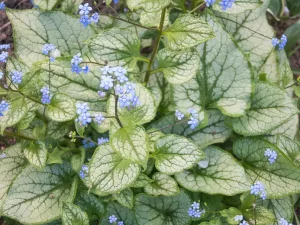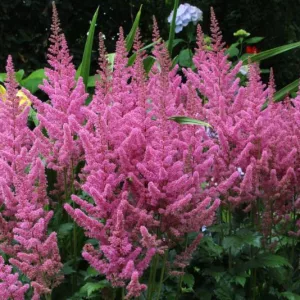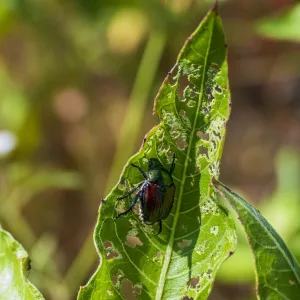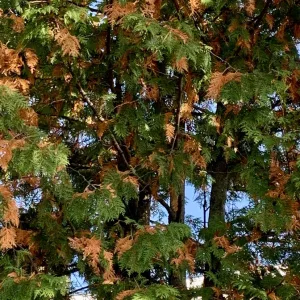It’s 7 am on a very quiet but sunny morning. I’m thrilled to see the sun for a second day in a row with 2 more sunny days predicted. That’s a real treat in this spring that has been so wet and cold.
On a positive note, because you just have to look for one, all my spring blooming perennials and bulbs sure have thrived in the cool temperatures. Primroses, trillium, daffodils, tulips, brunnera, and pulmonaria have all been flowering for several weeks. A bright spot amongst the gloom! I’m harvesting a great crop of asparagus too.
Everyone has been so anxious to get planting. I hope your gardens have dried up enough to finally be workable. This is the spring that I do have the advantage of being on a sandy base. I’ve had huge puddles on rainy days but the water does drain away quickly afterwards.
Garden centre benches are emptying quickly as gardeners stock up on annual flowers to add a bright spot to their yards, patios, decks and porches. Containers, pots and potting soil are filling carts too. Just a word of advice as the prediction is for a cooler and wetter summer than average for our are: Be sure that every container you plant has a good drainage hole in the bottom. Frequent rain can really waterlog soil. If the excess water has nowhere to go, roots will rot and plants will die.
Be sure to also have adequate fertilizer on hand. When it rains so much, any food plants don’t instantly absorb gets leached away. Give your container plants fertilizer regularly to keep those flowers blooming.
Another thing to start watching for now that warmer weather has come is insect and disease problems that may arise. Check planters and baskets regularly. Mildew and other diseases thrive in damp weather.
Powdery mildew is the most common disease to look for. It forms white irregular blotches on the leaves that easily rub off. Pick off any leaves if you see this problem starting on and spray foliage with sulfur to prevent the disease from spreading.
Also keep an eye out for leaves that rot from excess moisture. Pinch poor leaves off as soon as you see them so the rot doesn’t spread. You can also thin out foliage a bit to allow for better air circulation. Clean up spent blossoms too. They can rot quickly in wet conditions, spreading the problem throughout the plants.
If growth gets a bit long and lanky due to too many grey days, pinch back tips and trim stems to keep plants healthy. Pruning always encourages new growth and combined with an extra application of fertilizer, plants will respond well.
We haven’t seen too many insects doing damage yet but warmer weather will bring them out. Watch out for red lily beetle in your perennial garden, aphids on the new growth of garden plants, snails and slugs in shady areas and earwigs eating holes in leaves and flowers.
Be sure to catch insect problems as soon as they arise so not too much damage is done. It’s much easier to control a small outbreak that a major problem
On another bright note, this is good planting weather for trees, shrubs and perennials! I know a lot of people are having to replace trees and shrubs that were physically damaged by heavy snow loads and winter ice storms.
Just a reminder that the #1 reason I see dead trees and shrubs coming back to the garden centre is being planted too deep. Mulch piled up high against stems is also deadly practice. Be sure to have firm soil below the planting hole so plants don’t settle down deeper over time. Set them in the hole no deeper than they were originally growing in their pots. If you plan to mulch, plant a bit higher and lightly cover the root ball leaving very little mulch against the stem.




